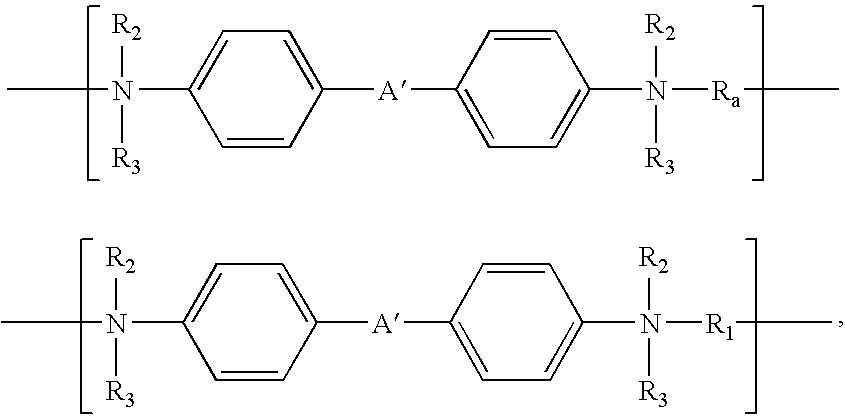Polyionene polymers with hydrolyzable linkages
a polymer and hydrolyzed technology, applied in the direction of organic active ingredients, synthetic polymer active ingredients, coatings, etc., can solve the problems of ineffective microbial infection treatment, biofouling of the surface of the microbial infection, and becoming almost impossible to remov
- Summary
- Abstract
- Description
- Claims
- Application Information
AI Technical Summary
Problems solved by technology
Method used
Image
Examples
example 1
Procedure for Synthesizing an Array of 96 Hydrolyzable Polyionenes
[0107] Stock solutions (3.2M) of eight different secondary diamines and 12 different diacrylates, all of which are shown below, were prepared in methylene chloride. One ml of each sample was added to 8 ml tared and labeled vials which were set up in an 8×12 array. Materials that would not dissolve in methylene chloride were added neat to their appropriate vials (3.2 mmol), as well as 1 ml of methylene chloride. The samples were placed on a heater / shaker block at a temperature of 45° C. and shaken for 5 days. During this reaction period, 0.5 ml of methylene chloride was added to any sample that was not completely dissolved. After the five days, the samples were cooled to room temperature and precipitated with ether. Approximately 3 ml of ether were added to each sample. The sample was vortexed and allowed to settle. The ether was decanted off and methylene chloride was added to dissolve each sample again. This precip...
PUM
| Property | Measurement | Unit |
|---|---|---|
| molecular weights | aaaaa | aaaaa |
| molecular weights | aaaaa | aaaaa |
| molecular weights | aaaaa | aaaaa |
Abstract
Description
Claims
Application Information
 Login to View More
Login to View More - R&D
- Intellectual Property
- Life Sciences
- Materials
- Tech Scout
- Unparalleled Data Quality
- Higher Quality Content
- 60% Fewer Hallucinations
Browse by: Latest US Patents, China's latest patents, Technical Efficacy Thesaurus, Application Domain, Technology Topic, Popular Technical Reports.
© 2025 PatSnap. All rights reserved.Legal|Privacy policy|Modern Slavery Act Transparency Statement|Sitemap|About US| Contact US: help@patsnap.com



